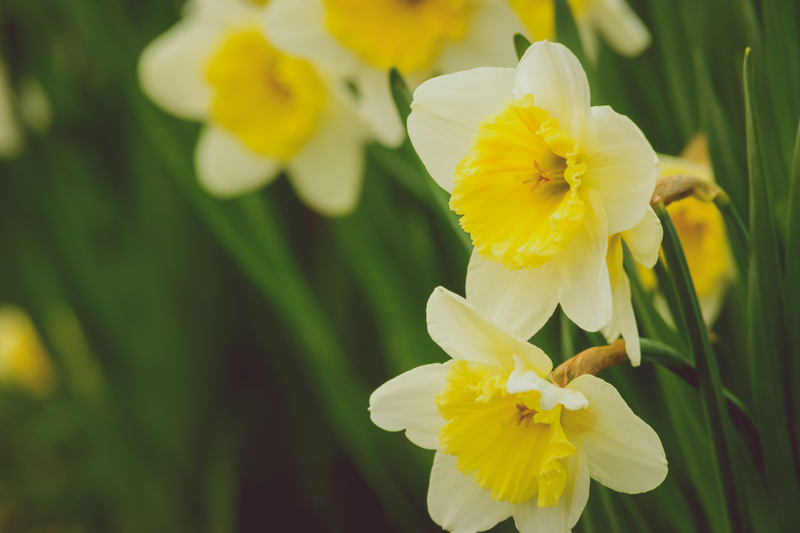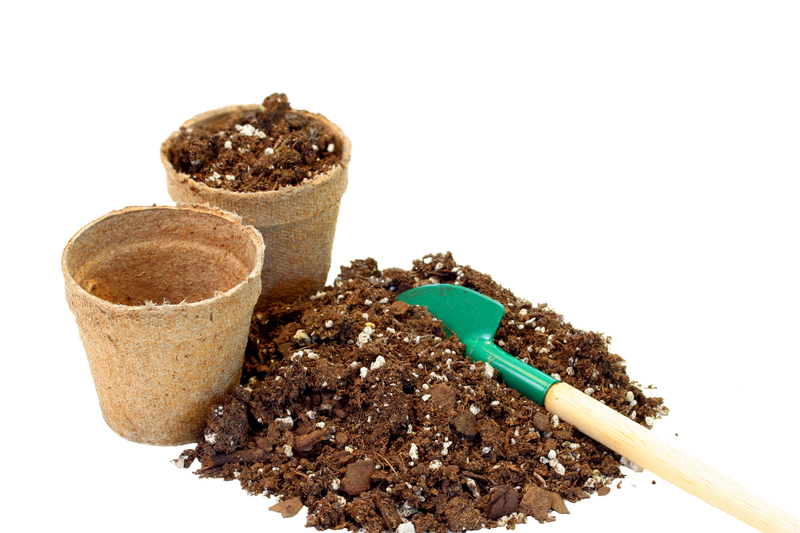Vertical Gardening: Space-saving Solutions with Style
Posted on 29/05/2025
Vertical Gardening: Space-Saving Solutions with Style
Vertical gardening has revolutionized the way we think about greenery, especially in urban environments where space is at a premium. No longer are lush gardens reserved for sprawling backyards; with a bit of creativity and some vertical magic, you can transform even the smallest balcony, wall, or patio into a vibrant oasis. In this comprehensive guide, we'll explore vertical gardening techniques, benefits, design inspirations, and practical tips to help you cultivate your own eco-friendly haven--without sacrificing style or space.
What is Vertical Gardening?
Simply put, vertical gardens (also known as living walls or green walls) are arrangements of plants grown upwards using structures like trellises, shelves, frames, or even recycled materials. These space-saving garden solutions allow you to maximize greenery in compact areas, making them ideal for city dwellers, apartment owners, or anyone with limited room.
- Utilize vertical spaces such as walls, fences, balconies, patios, and even indoor rooms
- Create stunning visual interest--in both modern and traditional decor settings
- Grow a myriad of plants: herbs, vegetables, succulents, flowering vines, or ferns
The Rise of Urban Vertical Gardens
As cities grow denser, the challenge of introducing nature into concrete landscapes becomes more pronounced. Vertical gardening solutions have emerged as an answer to this challenge by:
- Transforming bland walls into lush, living art
- Improving air quality and reducing urban heat
- Offering privacy and noise insulation
- Boosting mental well-being through biophilic design

Benefits of Vertical Gardening
Whether you're an experienced green thumb or a complete beginner, integrating a vertical garden into your living space offers a host of advantages:
1. Maximizing Small Spaces
With vertical gardens, you can make use of neglected spaces--balconies, courtyards, rooftop terraces, and even empty walls. By growing upwards, you free up ground space for seating, entertaining, or other uses.
2. Stylish Decor Enhancement
Vertical planting systems double as living art installations. Choose from rustic pallets, modern modular panels, or custom trellises to match your personal taste. Stylish vertical gardening becomes a natural conversation starter in any environment.
3. Improved Air Quality
Plants naturally filter pollutants and purify the air. A densely planted green wall can reduce airborne toxins, enhance oxygen levels, and humidify dry interiors, making your home healthier and more vibrant.
4. Easy Maintenance & Accessibility
Forget bending or kneeling--most vertical garden arrangements are at eye or waist level, making maintenance such as watering, pruning, and harvesting easier than ever.
5. Greater Flexibility and Customization
You're free to experiment! Mix edibles and ornamentals, combine textures, or create seasonal rotations. With modular systems, you can expand or redesign your garden as your needs or style evolve.
Types of Vertical Gardening Systems
Not sure where to start? These are the most popular vertical gardening systems that range from beginner DIY projects to advanced, stylish setups:
1. Wall Planters and Pocket Gardens
- Fabric Pockets: Hangable, breathable planters ideal for herbs and leafy greens indoors or in shaded spots.
- Ceramic or Wooden Pots: Affixed directly onto walls, perfect for a mosaic of succulents or trailing vines.
2. Trellises and Climbers
- Great for flowering climbers (like clematis or bougainvillea), edible beans, and peas
- Add instant height and privacy along fences or balconies
3. Modular Panel Systems
- Modern panels with built-in irrigation for seamless watering
- Professional systems can cover entire building facades or create room dividers
4. Recycled and Upcycled Vertical Gardens
- Repurpose pallets, shoe organizers, rain gutters, or old ladders
- Eco-friendly, budget-conscious, and deeply personalized
5. Freestanding Vertical Towers
- Stacked containers or growing towers--popular for strawberries, lettuces, and herbs
- Perfect for patios and rooftop gardens
Choosing the Right Plants for Your Vertical Garden
Selecting the appropriate plants is essential for space-saving vertical gardens to thrive. Consider the amount of sunlight, exposure to wind or rain, and watering logistics before choosing your plant palette.
Best Plant Choices for Vertical Gardens
- Herbs: Basil, mint, parsley, oregano, thyme, chives
- Leafy Greens: Lettuce, arugula, spinach, kale
- Trailing and Climbing Plants: Philodendron, ivy, pothos, English ivy, morning glory
- Succulents and Cacti: Sedum, echeveria, jade plant, hens-and-chicks
- Ornamental Flowers: Petunias, nasturtiums, fuchsias, lobelia
- Vegetables: Cherry tomatoes, peppers, peas, beans
*Tip:* Mix textures, leaf shapes, and growth habits for interest. For bold style, play with color contrasts and stagger your planting heights!
How to Start Your Own Stylish Vertical Garden
Step 1: Assess Your Space and Light
- Find a sturdy location that gets the right amount of sunlight for your intended plants
- Ensure vertical support is strong enough to hold the weight when watered
Step 2: Choose the System That Fits Your Needs
- Modular panel for a modern look or full facade
- DIY upcycled option for budget and creativity
- Freestanding tower for flexibility and portability
Step 3: Prepare the Soil & Irrigation
- Use lightweight, moisture-retaining potting mix
- Install drip irrigation or self-watering inserts for low-maintenance care
Step 4: Plant Selection and Arrangement
- Arrange taller plants at the top, cascading or trailing types near the bottom
- Mix in various foliage textures and plant types for visual appeal
Step 5: Maintenance and Enjoyment
- Water regularly and check soil moisture--vertical gardens may dry out quickly
- Prune and fertilize as needed, rotate plants seasonally for best results
Pro Tip: Automated irrigation saves time and ensures consistent moisture--ideal for frequent travelers or busy lifestyles!
Vertical Gardening Design Ideas for Maximum Impact
1. Living Room Feature Wall
Install a sleek modular panel filled with lush tropical foliage and ferns. Add under-lighting for dramatic effect, turning your green wall into living art.
2. Kitchen Herb Wall
Mount a series of small pots, jars, or breathable pockets on a sunlit kitchen wall. Grow the freshest herbs right where you cook--and add fragrance and flavor to your meals!
3. Balcony Privacy Screen
Attach a vertical trellis or panel to your balcony railing. Fill with dense climbers or cascading plants to create an intimate, private retreat in the heart of the city.
4. Outdoor Courtyard Oasis
Cover a fence or courtyard wall with a combination of flowering vines, succulents, and ornamental grasses. Use staggered shelves and recycled containers for an eclectic, boho vibe.
5. Partitioning Open Plan Spaces
Freestanding vertical garden towers or framed green panels can smartly section off rooms or patios, providing a living, breathing partition that enhances airflow and aesthetics.
Sustainable and Eco-Friendly Vertical Gardening Practices
Vertical gardens don't just save space--they conserve resources. Here's how you can ramp up your sustainability:
- Use recycled or reclaimed materials for your structures or containers
- Collect rainwater for your garden's irrigation needs
- Choose native or drought-tolerant plants to minimize water consumption
- Compost kitchen scraps and plant trimmings for natural fertilizer
How Vertical Gardens Combat Urban Heat
Living walls absorb sunlight, filter air, and help reduce the urban heat island effect. In dense cities, strategically placed green walls can cool interiors, lower energy costs, and support local biodiversity.
Overcoming Common Challenges in Vertical Gardening
While the rewards of a space-saving vertical garden are immense, a few challenges may arise:
- Water Management: Elevated planters may dry out faster--monitor moisture and consider an automated irrigation system.
- Structural Load: Ensure your wall or frame can support the weight of wet soil and mature plants.
- Pest Control: Crowded plantings can increase pests. Regularly check leaves and rotate your crops.
- Light Levels: Not all spots are suitable for sun-loving plants--balance shade and sunlight needs carefully.
Most issues can be solved through careful planning and regular maintenance. Start small, experiment, and expand as you gain confidence!

Vertical Gardening Trends and Innovations
With growing interest in urban agriculture, vertical gardening continues to evolve:
- Smart Gardens: Automated sensors, hydroponics, and app-controlled lighting make vertical gardening easier and more efficient than ever.
- Edible Walls: Homeowners and restaurants are growing everything from microgreens to salads on living walls--and harvesting food year-round.
- DIY Creativity: Social media is full of creative upcycled ideas, from PVC pipes to mason jars and beyond.
- Corporate Green Spaces: Office buildings and malls are embracing large-scale vertical gardens to improve employee well-being and brand aesthetics.
Conclusion: Transform Your Home with Space-Saving Vertical Gardens
In a world where outdoor space is increasingly precious, vertical gardens offer an elegant, sustainable, and stylish solution. By growing upwards, you can enjoy the benefits of lush greenery, fresher air, and improved aesthetics--no matter the size of your home.
Ready to turn a dull wall into a thriving ecosystem? Start small, think creatively, choose the right system and plants, and you'll soon enjoy the joys of vertical gardening: space-saving solutions with style. Bring nature to new heights--and make your personal space a reflection of your environmental values and aesthetic vision!
- Embrace modern space-saving gardening--let your walls come alive!
- Reimagine your living spaces with innovative vertical garden designs
- Grow, relax, and breathe easy--stylishly

